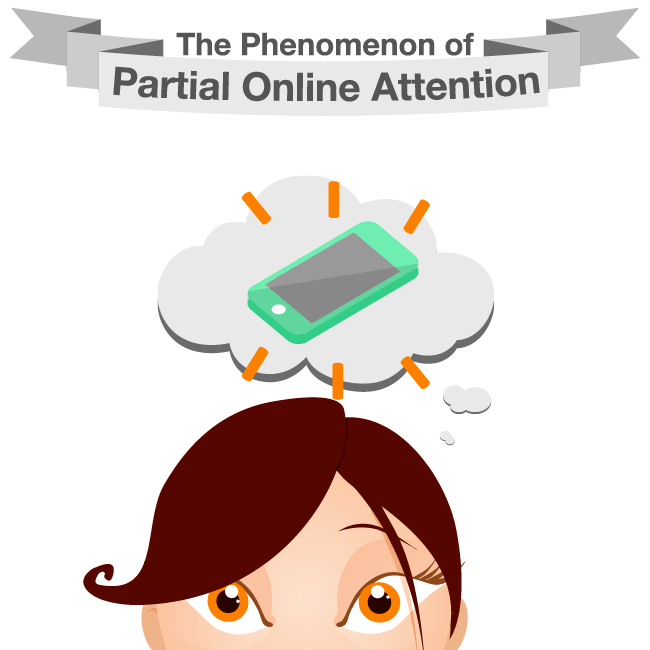The current era is often referred to as the Age of Information; however, it could just as easily be called the Age of Distraction or the Age of Interruption as, although humanity has never in its history been entirely distraction free, distractions have never been more rampant as they are today. Different forms of information are constantly battling for attention causing continuous partial attention to become commonplace. Thomas Friedman stated in 2006 “All we do now is interrupt each other or ourselves with instant messages, e-mail, spam or cellphone rings.”
Instructional designers are just one of many types of professionals who need to learn to adapt to this new situation, as it is essential to hold the attention of students if they are to absorb and remember information. For this reason, it is crucial that they understand what is meant by continuous partial attention and its implications for eLearning courses.
Much of the following information is based around the studies of Ellen Rose.

The Phenomenon of Continuous Partial Attention
The term continuous partial attention was first used by Apple and Microsoft executive Linda Stone in 1990 to describe, in her own words, “post multitasking” behavior. Whereas multitasking involves engaging in more than one activity at the same time (regardless of the fact that some studies have shown the practice to be detrimental to work quality), continuous partial awareness occurs when a person splits attention between multiple tasks at a superficial level. It is also known as media multitasking, a term coined by Ulla Foehr in the 2006 Kaser Family Foundation report.
A second important difference between multitasking and continuous partial attention is that with the latter comes a compulsion to connect. The former, in contrast, is driven by the urge to increase productivity. Put another way, continuous partial attention is a state of hyperawareness, motivated by the desire “not to miss anything”, which leads to a reluctancy to give any one thing full attention. Users, therefore, become engaged in everything around them but are fully focused on nothing, just in case something more important emerges.
As current research is still inconclusive, views are divided as to whether continuous partial attention is a distraction (as most experts believe) or a means for the brain to adapt to the constant flow of stimuli. It is indisputable, however, that too much continuous partial attention can cause high stress levels, artificial sincerity, and overstimulated brain synapses, which leads to intellectual and emotional overload.
What This Means for Instructional Designers
Continuous partial attention has particular significance to eLearning because the very nature of such learning demands users to be connected on a computer or mobile device, therefore competing with blogs, chats, games, and other online distractions learner's can be dealing with at the same time. In order for eLearning courses to be successful, instructors require learners’ full attention to avoid users missing or forgetting important information. After all, attention is an essential condition for the functioning of any learning environment.
To overcome the issues related to continuous partial attention, instructional designers must think differently about attention and furthermore accept that learners’ attention is constantly fractured. Developers need to design eLearning courses with the idea that people are easily distracted and prone to switching tasks in mind.
It becomes necessary to use technology both to minimize distractions and to support learners in developing their own attention strategies. This means using interfaces and interactivity that promote focus and reflection; using technology to highlight the fact that attention is divided; and helping users monitor their attention.
In the own words of researcher Ellen Rose, “we need to find ways to use technology’s strengths and capabilities, first, to foster learners’ awareness of the extent to which their attention is dispersed; and second, and to help them to deliberately monitor and regulate their attentional resources”.
Certainly, instructional designers can achieve all of this through metacognitive and reflective designs — rather than controlling cognitive processes, developers enable learners to understand these processes and allow them to assert control.
Distractions are here to stay; most likely, they will even worsen as time goes on. In order to cope with this changing learning environment, instructional designers need to accept the challenge and start harnessing new technology to their advantage.
Further reads:




